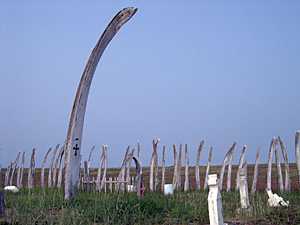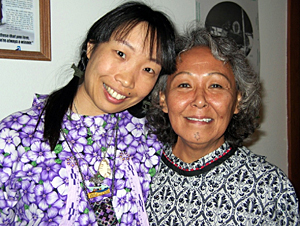

- Rozovsky wins prestigious NSF Early Career Award
- UD students meet alumni, experience 'closing bell' at NYSE
- Newark Police seek assistance in identifying suspects in robbery
- Rivlin says bipartisan budget action, stronger budget rules key to reversing debt
- Stink bugs shouldn't pose problem until late summer
- Gao to honor Placido Domingo in Washington performance
- Adopt-A-Highway project keeps Lewes road clean
- WVUD's Radiothon fundraiser runs April 1-10
- W.D. Snodgrass Symposium to honor Pulitzer winner
- New guide helps cancer patients manage symptoms
- UD in the News, March 25, 2011
- For the Record, March 25, 2011
- Public opinion expert discusses world views of U.S. in Global Agenda series
- Congressional delegation, dean laud Center for Community Research and Service program
- Center for Political Communication sets symposium on politics, entertainment
- Students work to raise funds, awareness of domestic violence
- Equestrian team wins regional championship in Western riding
- Markell, Harker stress importance of agriculture to Delaware's economy
- Carol A. Ammon MBA Case Competition winners announced
- Prof presents blood-clotting studies at Gordon Research Conference
- Sexual Assault Awareness Month events, programs announced
- Stay connected with Sea Grant, CEOE e-newsletter
- A message to UD regarding the tragedy in Japan
- More News >>
- March 31-May 14: REP stages Neil Simon's 'The Good Doctor'
- April 2: Newark plans annual 'wine and dine'
- April 5: Expert perspective on U.S. health care
- April 5: Comedian Ace Guillen to visit Scrounge
- April 6, May 4: School of Nursing sponsors research lecture series
- April 6-May 4: Confucius Institute presents Chinese Film Series on Wednesdays
- April 6: IPCC's Pachauri to discuss sustainable development in DENIN Dialogue Series
- April 7: 'WVUDstock' radiothon concert announced
- April 8: English Language Institute presents 'Arts in Translation'
- April 9: Green and Healthy Living Expo planned at The Bob
- April 9: Center for Political Communication to host Onion editor
- April 10: Alumni Easter Egg-stravaganza planned
- April 11: CDS session to focus on visual assistive technologies
- April 12: T.J. Stiles to speak at UDLA annual dinner
- April 15, 16: Annual UD push lawnmower tune-up scheduled
- April 15, 16: Master Players series presents iMusic 4, China Magpie
- April 15, 16: Delaware Symphony, UD chorus to perform Mahler work
- April 18: Former NFL Coach Bill Cowher featured in UD Speaks
- April 21-24: Sesame Street Live brings Elmo and friends to The Bob
- April 30: Save the date for Ag Day 2011 at UD
- April 30: Symposium to consider 'Frontiers at the Chemistry-Biology Interface'
- April 30-May 1: Relay for Life set at Delaware Field House
- May 4: Delaware Membrane Protein Symposium announced
- May 5: Northwestern University's Leon Keer to deliver Kerr lecture
- May 7: Women's volleyball team to host second annual Spring Fling
- Through May 3: SPPA announces speakers for 10th annual lecture series
- Through May 4: Global Agenda sees U.S. through others' eyes; World Bank president to speak
- Through May 4: 'Research on Race, Ethnicity, Culture' topic of series
- Through May 9: Black American Studies announces lecture series
- Through May 11: 'Challenges in Jewish Culture' lecture series announced
- Through May 11: Area Studies research featured in speaker series
- Through June 5: 'Andy Warhol: Behind the Camera' on view in Old College Gallery
- Through July 15: 'Bodyscapes' on view at Mechanical Hall Gallery
- More What's Happening >>
- UD calendar >>
- Middle States evaluation team on campus April 5
- Phipps named HR Liaison of the Quarter
- Senior wins iPad for participating in assessment study
- April 19: Procurement Services schedules information sessions
- UD Bookstore announces spring break hours
- HealthyU Wellness Program encourages employees to 'Step into Spring'
- April 8-29: Faculty roundtable series considers student engagement
- GRE is changing; learn more at April 15 info session
- April 30: UD Evening with Blue Rocks set for employees
- Morris Library to be open 24/7 during final exams
- More Campus FYI >>
11:48 a.m., March 4, 2009----The Iñupiaq people of Alaska live in the northernmost regions of the United States and the North American mainland, including the city of Barrow, the most northern U.S. city. In this harsh Arctic environment, the bowhead whale is central to Iñupiaq life and culture. In fact, the Iñupiaq identify themselves as the “People of the Whales.”
However, global warming is not only affecting bowhead whales and the subsistence whaling on which the Iñupiaq depend, but it also threatens the oral traditions, traditional music, and indigenous world views of the Iñupiaq people, according to Chie Sakakibara, a postdoctoral fellow at Columbia University's Earth Institute.
On Friday, March 20, at 3:30 p.m. in Room 127 Memorial Hall on the University of Delaware's Newark campus, Sakakibara will present the lecture “Kiavallakkikput Agviq--Cultural Responses to Climate Change among the Iñupiaq People of Arctic Alaska.”
As part of her research, funded by the National Science Foundation and the Barrow Arctic Science Consortium, Sakakibara conducted fieldwork in Barrow and Point Hope, Alaska, in 2004-2008. Currently working on her first book on the Iñupiaq people, Sakakibara also is collaborating with the Center for Ethnomusicology at Columbia University on the Iñupiaq music heritage repatriation project.
During her lecture, Sakakibara will elaborate on the cultural survival efforts and sustainability of the Iñupiaq people in their environment and invite the audience to consider the past, present, and future of the polar region and beyond in a time of global climate change.
The lecture is free and open to the public and will be followed by a catered reception. Seating is limited. Register online at this Web site.
The lecture will be Webcast live at this site and be made available as a podcast after the event at this site.
The lecture also will be simulcast into the University of Delaware's virtual world in Second Life, at this location. Note that you must have an avatar in Second Life to visit using this link.
The lecture is co-sponsored by the Department of Geography and the Department of Anthropology. It is the latest installment in the University's William S. Carlson International Polar Year Events, which celebrates the world's fourth International Polar Year and the University of Delaware president from 1946-1950, who was a polar explorer.
Article by Tracey Bryant


